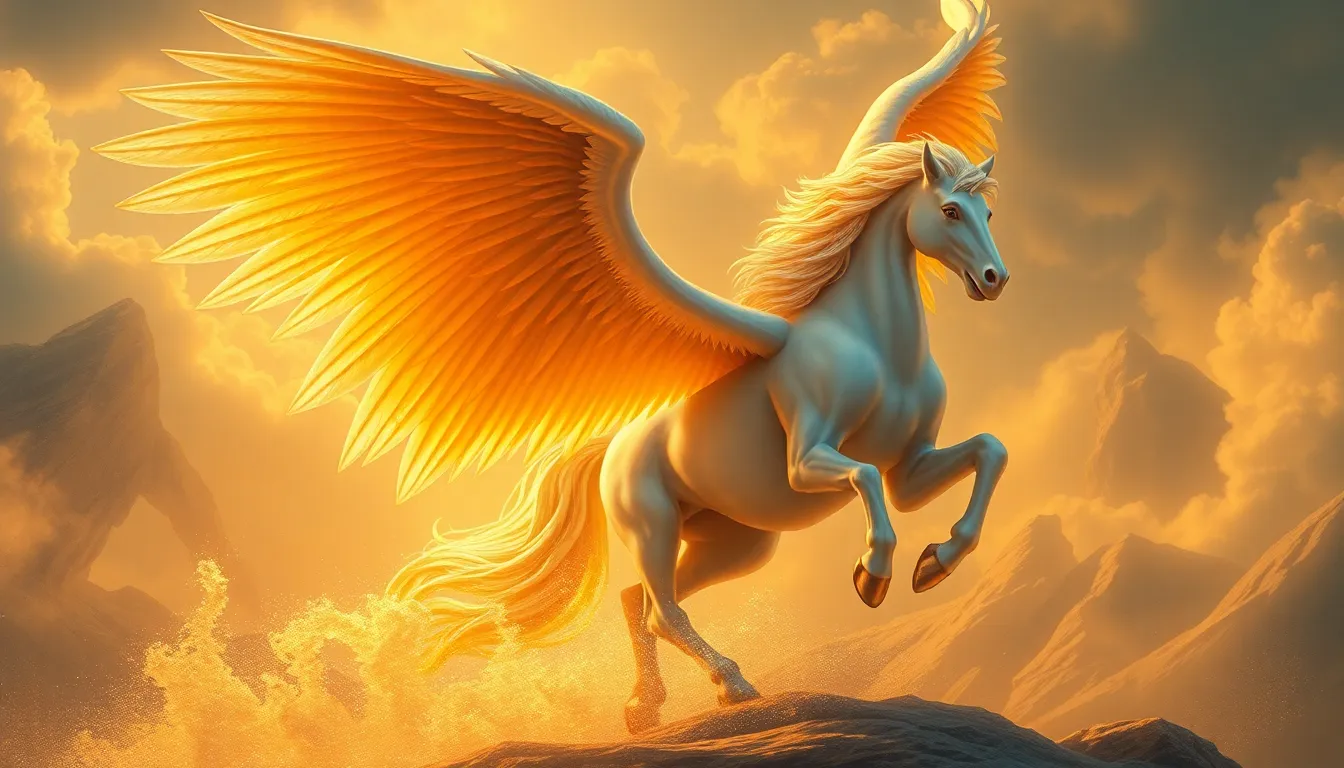Pegasus in Children’s Literature: Teaching Myths to Young Readers
I. Introduction
Pegasus, the magnificent winged horse from Greek mythology, has captured the imaginations of countless generations. As a symbol of beauty, freedom, and inspiration, Pegasus transcends time and culture, making it a compelling subject in children’s literature. The importance of mythology in children’s literature cannot be overstated; it serves as a gateway for young readers to explore themes of bravery, adventure, and morality.
This article aims to explore how stories of Pegasus can teach young readers about myths, while also enhancing their literary skills and cultural understanding.
II. The Mythological Origins of Pegasus
Pegasus has a rich history in Greek mythology. According to legend, he sprang from the blood of Medusa when she was slain by the hero Perseus. This unique birth connects Pegasus to the themes of transformation and the duality of beauty and danger.
Throughout mythology, Pegasus is associated with several key figures and stories:
- Perseus: The hero who rides Pegasus during his quest to slay Medusa.
- Bellerophon: The hero who tames Pegasus and rides him to defeat the Chimera.
- Athena: The goddess who helps Bellerophon in his quest, emphasizing the connection between wisdom and heroism.
The symbolism of Pegasus is multifaceted, representing:
- Inspiration and artistic creativity.
- Freedom and the pursuit of lofty ideals.
- The intersection of the mortal and the divine.
III. Pegasus in Modern Children’s Literature
In contemporary literature, Pegasus continues to inspire authors and illustrators who reimagine his story for young audiences. From picture books to chapter books, Pegasus appears in various narratives that highlight adventure, friendship, and the quest for self-discovery.
Notable authors and illustrators contributing to this genre include:
- Kate O’Hearn: Known for her series “Pegasus,” which combines classical mythology with modern themes.
- Marissa Meyer: In her “Lunar Chronicles,” she incorporates Pegasus-like creatures in a fantastical retelling of classic tales.
Popular titles featuring Pegasus often explore themes such as:
- The importance of courage in the face of adversity.
- The power of friendship and collaboration.
- Embracing one’s unique abilities and heritage.
IV. The Educational Value of Myths
Myths play a significant role in enhancing literacy and comprehension skills. By engaging with stories about Pegasus, young readers can:
- Expand their vocabulary through rich, descriptive language.
- Improve their comprehension skills by analyzing narrative structures and character motivations.
- Develop empathy and emotional intelligence by relating to characters’ experiences and challenges.
Lessons and morals derived from Pegasus stories often revolve around:
- The value of perseverance and hard work.
- Understanding the consequences of one’s actions.
- The importance of seeking help and guidance from others.
Furthermore, these stories encourage critical thinking and imagination, allowing children to explore complex themes in a relatable context.
V. Engaging Young Readers with Pegasus
To effectively introduce Pegasus literature to children, parents and educators can use various strategies:
- Read aloud sessions that emphasize storytelling and character voices.
- Interactive discussions about the themes and lessons in Pegasus stories.
- Encouraging children to draw their interpretations of Pegasus and related myths.
Activities and discussion prompts might include:
- What qualities make Pegasus a hero in your eyes?
- If you could ride Pegasus, where would you go and why?
- How do you think Pegasus feels in different situations?
Incorporating art and creativity can further enhance the learning experience, allowing children to express their understanding of the mythological themes through drawing, painting, or crafting.
VI. The Role of Pegasus in Cultural Awareness
Pegasus’s significance extends beyond Greek mythology, as he represents a bridge to understanding other cultures’ mythical creatures. Exploring Pegasus can foster appreciation for diversity through global myths. For instance:
- Similar creatures: Many cultures have mythical horses or winged beings, like the Qilin in Chinese mythology or the Thunderbird in Native American lore.
- Cross-cultural themes: Themes of freedom, adventure, and the supernatural can be found across various mythologies, highlighting universal human experiences.
Engaging with these myths allows young readers to appreciate the cultural significance of Pegasus while recognizing the common threads that bind different narratives together.
VII. Challenges and Considerations
While teaching myths through literature can be enriching, there are challenges to consider:
- Misconceptions: Children may misunderstand the historical context of myths or conflate them with mere fairy tales.
- Entertainment vs. Education: Striking a balance between storytelling and imparting educational values is crucial for effective learning.
- Age-appropriate content: Ensuring that the themes and narratives are suitable for the target age group is essential to maintain engagement and understanding.
VIII. Conclusion
Pegasus holds a significant place in children’s literature, offering a rich tapestry of stories that educate and inspire. By exploring mythological narratives, young readers can develop literacy skills, moral reasoning, and cultural awareness. Continued exploration of such myths encourages a love for reading and an appreciation for the stories that shape our understanding of the world.
In closing, fostering a passion for mythology through engaging stories about Pegasus can lead to a lifelong love of literature and learning.




